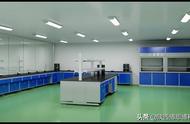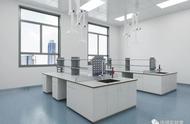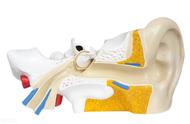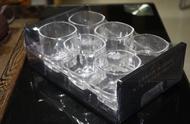Independent variable (IV): Variable the experimenter manipulates - assumed to have a direct effect on the dependent variable.
Dependent variable (DV): Variable the experimenter measures, after making changes to the IV which are assumed to affect the DV.
Extraneous variables (Ex Vs): Other variables, apart from the IV, that might affect the DV. They might be important enough to provide alternative explanations for the effects, for example, confounding variables.
独立变量(IV):实验者操纵的变量--假定对因变量有直接影响。
被动变量(DV):实验者测量的变量,在对IV进行改变后,假定会影响DV。
外在变量(Ex Vs):除了IV之外,可能影响DV的其他变量。它们可能很重要,足以为效果提供其他解释,例如,混杂变量。

Laboratory experiment: Artificial environment with tight controls over variables.
Field experiment: Natural environment with Independent variable manipulated by researchers.
Natural experiment: Natural changes in independent variable are used - it is not manipulated.
实验室实验:人工环境,对变量进行严格控制。
现场实验:自然环境,由研究人员操纵独立变量。
自然实验:使用自变量的自然变化--它没有被操纵。
Note: In a true experiment participants are randomly allocated to groups.
注意:在真正的实验中,参与者被随机分配到各组。
Strengths and weaknesses of experimental methods 实验方法的优势和劣势Laboratory experiments 实验室实验
Strengths 优势: | Weaknesses 弱点: |
Tighter control of variables. Easier to comment on cause and effect. 对变量的控制更严密。更容易对因果关系进行评论。 | demand characteristics - participants aware of experiment, may change behaviour. 需求特征--参与者意识到实验,可能会改变行为。 |
Relatively easy to replicate. 相对容易复制。 | Artificial environment - low realism. 人工环境--现实性低。 |
Enable use of complex equipment. 能够使用复杂的设备。 | May have low ecological validity - difficult to generalise to other situations. 可能具有较低的生态有效性--难以推广到其他情况。 |
Often cheaper and less time-consuming than other methods. 通常比其他方法更便宜、更省时。 | Experimenter effects - bias when experimenter's expectations affect behaviour. 实验者效应--当实验者的期望影响行为时,会产生偏差。 |

A field experiment takes place anywhere in a natural setting; it could take place in a school, hospital, the street or an office. 现场实验在自然环境中的任何地方进行;它可以在学校、医院、街道或办公室进行。
Note 注意:
A field experiment is an experiment; the independent variable is manipulated. Not all field studies are experiments.
实地实验是一种实验;自变量是被操纵的。不是所有的实地研究都是实验。
Strengths 优势: | Weaknesses 弱点: |
People may behave more naturally than in laboratory - higher realism. 人们的行为可能比在实验室里更自然--更真实。 | Often only weak control of extraneous variables - difficult to replicate. 通常只对不相*变量进行薄弱的控制--难以复制。 |
Easier to generalise from results. 更容易从结果中归纳。 | Can be time-consuming and costly. 可能很费时间和成本。 |
Strengths 优势: | Weaknesses 弱点: |
Situations in which it would be ethically unacceptable to manipulate the independent variable. 操纵自变量在伦理上是不可接受的情况。 | The independent variable is not controlled by the experimenter. 自变量不受实验者的控制。 |
Less chance of demand characteristics or experimenter bias interfering. 需求特征或实验者偏见干扰的机会较少。 | No control over the allocation of participants to groups (random in a 'true experiment'). 对参与者的分组没有控制("真正的实验 "中的随机)。 |
Three experimental designs are commonly used 通常使用三种实验设计:
Independent groups: Testing separate groups of people, each group is tested in a different condition.
Repeated measures: Testing the same group of people in different conditions, the same people are used repeatedly.
Matched pairs: Testing separate groups of people - each member of one group is same age, sex, or social background as a member of the other group.
In each case, there are one or more experimental groups, where the independent variable has changed and a control group where the independent variable has not changed.
独立组:测试不同的人群,每组在不同的条件下进行测试。
反复测量:在不同条件下测试同一组人,重复使用相同的人。
匹配的一对:测试不同的人群--一个组的每个成员与另一个组的成员具有相同的年龄、性别或社会背景。
在每一种情况下,都有一个或多个实验组,其中自变量已经改变,还有一个对照组,其中自变量没有改变。

Independent groups 独立组:
Avoids order effects. If a person is involved in several tests they man become bored, tired and fed up by the time they come to the second test, or becoming wise to the requirements of the experiment!
More people are needed than with the repeated measures design.
Differences between participants in the groups may affect results, for example; variations in age, sex or social background. These differences are known as participant variables.
避免了顺序效应。如果一个人参与了几次测试,那么当他们到了第二次测试时,他们就会感到厌烦、疲惫和厌倦,或者对实验的要求变得明智!这就是独立组的好处。
与重复测量设计相比,需要更多的人。
各组参与者之间的差异可能会影响结果,例如,年龄、性别或社会背景的变化。这些差异被称为参与者变量。
Repeated measures 反复测量:
Avoids the problem of participant variables.
Fewer people are needed.
Order effects are more likely to occur.
避免了参与者变量的问题。
需要的人数较少。
顺序效应更有可能发生。
Matched pairs 匹配的一对:
Reduces participant variables.
Avoids order effects.
Very time-consuming trying to find closely matched pairs.
Impossible to match people exactly, unless identical twins!
减少了参与者的变数。
避免了顺序效应。
试图找到密切匹配的配对非常耗费时间。
除非是同卵双胞胎,否则不可能完全匹配!
Note 注意:
Counterbalancing: Alternating the order in which participants perform in different conditions of an experiment. For example, group 1 does 'A' then 'B', group 2 does 'B' then 'A' this is to eliminate order effects.
Randomisation: Material for each condition in an experiment is presented in a random order, this is also to prevent order effects.
平衡法:在实验的不同条件下,交替执行参与者的顺序。例如,第一组先做 "A "再做 "B",第二组先做 "B "再做 "A",这是为了消除顺序效应。
随机化:实验中每个条件的材料都是以随机顺序呈现的,这也是为了防止顺序效应。
,













